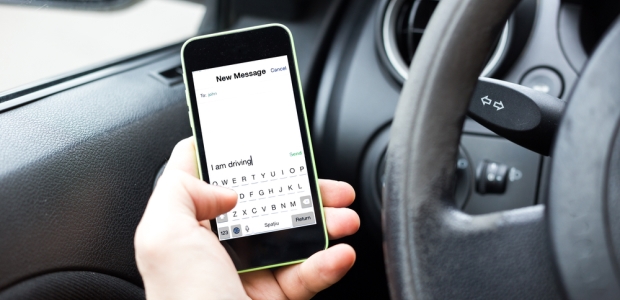
Florida Agencies Focused on Distracted Driving This Month
There were almost 50,000 crashes in Florida last year that involved distracted driving, and they accounted for more than 3,500 serious bodily injuries and 233 fatalities.
The Florida Highway Patrol, a division of the Florida Department of Highway Safety and Motor Vehicles (DHSMV), is partnering with the Florida Department of Transportation, Florida Police Chiefs Association, Florida Sheriffs Association, and AAA – The Auto Club Group to promote April as Distracted Driving Awareness Month. They're imploring motorists in the state to keep their eyes on the road and focus on driving, after there were almost 50,000 crashes in Florida last year that involved distracted driving.
"Driving distracted significantly slows a driver's reaction time to effectively avoid a crash, and no one should take that risk," DHSMV Executive Director Terry L. Rhodes said. That many crashes represents an average of more than five crashes every hour. During 2016, distracted driving crashes accounted for more than 3,500 serious bodily injuries and 233 fatalities -- and distracted driving crashes in the state have increased 26 percent since 2013, the agency reports.
They want drivers to remember that even a focused driver going 50 mph will travel nearly the length of a football field before coming to a complete stop. But a driver who is not focused on the road has limited his or her own ability to come to a stop and avoid a crash.
"When you drive distracted, you are putting the lives of everyone in your car and on the road around you in danger," explained Col. Gene S. Spaulding, director of the Florida Highway Patrol. "Driving distracted, even for a moment, can lead to a catastrophe. FHP wants to remind drivers to take the proper steps to eliminate these types of crashes and for everyone to be more focused on driving."
Driver distractions include visual (taking your eyes off the road), manual (taking your hands off the wheel), and cognitive (mind not on driving). "Texting is one of the most dangerous driver distractions since it involves visual, manual and cognitive distractions. However, texting is not the only distracted driving behavior; other dangerous driving distractions include putting on makeup, tending to children in the backseat, eating, tuning the radio, checking GPS navigation, and even daydreaming," DHSMV notes.
It reported that, in 2016, drivers age 20-24 were responsible for the highest number of distracted driving crashes, followed closely by 25-29 year olds and 15-19 year olds. In all, drivers younger than 30 accounted for more than 20,000 distracted driving crashes. "It's easy to underestimate the devastating effects of distracted driving, but that doesn't make it any less deadly for our drivers and the officers who are trying to keep them safe on our roads and highways," said Coconut Creek Police Chief Butch Arenal, president of the Florida Police Chiefs Association. "Make a commitment today to put down your phone and whatever else might be commanding your attention and keep your eyes on the road."
The public is encouraged to report dangerous and drunk drivers by safely dialing *FHP (*347).
The National Safety Council also is encouraging motorists to avoid distractions and has identified "some of the top driver behaviors and beliefs that put all roadway users at risk and increase the likelihood of being involved in a crash," with data from NSC surveys conducted during the past 12 months. "Most Americans recognize risky drivers on the roadways, but they are not adopting safer behaviors themselves," warned Deborah A.P. Hersman, president and CEO of the council. "The notion that bad things happen to other people but will not happen to us when we are distracted behind the wheel is akin to playing Russian roulette."
According to NSC, some of the things drivers do – or believe they can do – include these:
- 47 percent of drivers believe it is safe to send a text either manually or via voice-dictation systems.
- 45 percent say they feel pressure from employers to check email while driving.
- 44 percent say they have crashed in the last three years while they were either commuting or traveling for business.
- 35 percent of teens say they would use social media behind the wheel.
- 17 percent of teens feel their own distraction may have contributed to a crash.
- 71 percent believe they can have up to three drinks before they are not safe or are too impaired to drive.
- 33 percent believe it is acceptable to drive with less than four hours of sleep.
- 32 percent say new cars can essentially drive themselves.
- 13 percent have driven after using marijuana in the past month.
- Two-thirds of drivers have felt unsafe because of another driver's distraction, but only 25 percent feel their own distractions have put themselves or others at risk.
Visit nsc.org/ddmonth for information and resources.